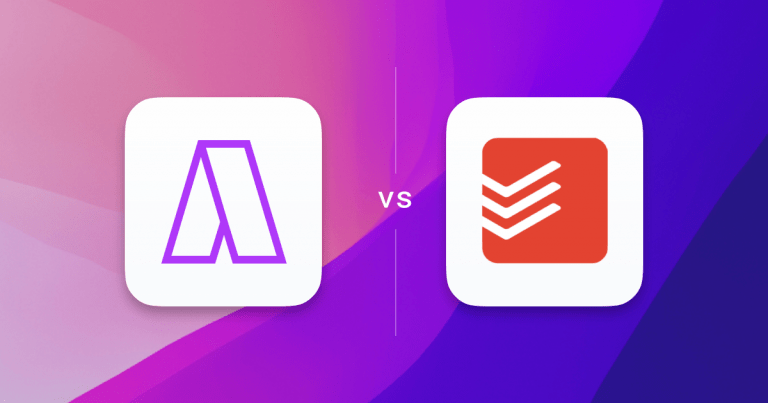What is Google Calendar
Google Calendar is free-to-use calendar application that excels in event planning, appointment scheduling, and integrating seamlessly with Google’s suite of services including Docs, Meet, and Tasks. It boasts features such as easy event scheduling, comprehensive integration with other Google services, sharing and collaboration tools, mobile access, automatic syncing across devices, customization options, and support for recurring events. Additionally, it offers functionalities like invitations and RSVP tracking, reminders, time management tools, search capabilities, holiday calendars, and weather integration for upcoming events.
Key Features of Google Calendar
- Seamless Integration with Google Services: Google Calendar is tightly integrated with Google’s ecosystem, including Gmail for event invitations, Google Meet for video conferencing directly from calendar invites, and Google Tasks for task management. This integration enhances productivity by keeping all tools in one accessible location.
- Easy Event Scheduling and Sharing: The platform enables users to quickly add events, set reminders, and share their calendars with others. This feature is designed to facilitate collaboration and ensure that scheduling meetings or events is a hassle-free process, making it ideal for both personal and professional use.
- Customizable Views and Event Colors: Users can customize their calendar views (day, week, month, or year) and assign colors to different events, making it easier to manage and visually distinguish between various types of appointments or tasks at a glance.
- Recurring Events and Reminders: Google Calendar supports the creation of recurring events and configurable reminders, which can be set to notify users via email or pop-up messages. This ensures that important dates are not missed and helps in establishing routines.
- Mobile Accessibility and Offline Support: With its mobile app, Google Calendar offers the convenience of accessing and managing your schedule on the go. Additionally, offline support means you can view your calendar and receive notifications even without an internet connection.
- Time Zone Support and Working Hours: This feature is particularly useful for those working across different time zones, as it automatically adjusts meeting times accordingly. Setting working hours also helps in managing availability, preventing meetings from being scheduled outside of these times.
What is Wrike
Wrike is a project management software designed to help teams manage their workspace and projects more efficiently. It offers a traditional interface with a wide range of functionalities including tables, boards, Gantt charts, and templates for collaboration across remote, hybrid, and in-person teams. Wrike supports various types of file proofing and integrates well with other tools like Miro, Microsoft Teams, and Slack. It is particularly popular among marketing and sales teams for its resource management and time logging features.
Key Features of Wrike
- Interactive Gantt Charts: Wrike’s Gantt charts allow users to visualize project timelines and dependencies. This feature helps in planning and adjusting schedules with simple drag-and-drop adjustments, facilitating easy management of complex project timelines.
- Real Time Collaboration: Teams can collaborate in real time, with updates and communications happening instantly across the platform. This ensures that all team members are on the same page and can react quickly to changes or updates.
- Customizable Dashboards: Wrike offers fully customizable dashboards that give users control over what data they see and how it’s presented. This helps in tracking the most relevant project metrics and individual tasks, tailoring the view to meet specific needs or roles within a team.
- Integrated Resource Management: The software includes tools for resource allocation and management, allowing managers to oversee team workloads, plan capacity, and distribute tasks efficiently to avoid overloading employees.
- Advanced Security Features: Wrike provides robust security measures, including role-based access control, to ensure that sensitive project data is protected and only accessible to authorized personnel.
- Automation Tools: With Wrike, repetitive tasks can be automated using custom workflows, which saves time and reduces the potential for human error. This feature supports a smoother project flow and improves overall efficiency.

Google Calendar vs Wrike: Features
| Features | Google Calendar | Wrike |
|---|---|---|
| Integrations | ClickUp, Google Tasks, Zoom, Slack, Salesforce, Google Docs | Salesforce, Microsoft Teams, Google Drive, Slack, Adobe Creative Cloud, and Zoom |
| Calendar | Yes | Yes |
| Platforms | macOS, iOS, Android, Web | Yes |
| Task Management | NA for Calendar | Task Creation and Updating, Multiple Viewing Options, Time Tracking, Templates, Comprehensive Task Reports, Task history logging, File Uploads and Sharing capabilities |
| Natural Language Processing | Yes | No |
| Time Blocking | Yes | Yes |
| Analytics | No | Yes |
| Meeting Scheduler | Yes | Yes |
| Time Zones | Yes | Yes |
| Reminders | Yes | Yes |
| Customer Support | Average | Good |
| 1:1 User Onboarding | No | Yes |
| Pricing | Free to use | Free, Professional at $9.80/user, Business at $24.80/user, and Enterprise. Each varies by features and team size |
Google Calendar vs Wrike: Pricing
Google Calendar Pricing
Free to use
Wrike Pricing
Wrike offers several pricing plans based on the size and needs of teams. Here’s a brief overview:
(i) Free Plan: Designed for teams just starting out, offering basic project management features with limitations on active tasks.
(ii) Professional Plan: Costs $9.80 per user/month, suitable for teams of 2-25 users, offering unlimited projects, tasks, and 2 GB of storage per user.
(iii) Business Plan: Priced at $24.80 per user/month, tailored for larger teams, it includes comprehensive project management tools, automation, approvals, and 5 GB of storage per user.
(iv) Enterprise Plan: For large teams needing enterprise-grade security and scalability, with pricing available upon contact. It includes advanced security features, automation, and 10 GB of storage per user.
(v) Pinnacle Plan: Aimed at teams with complex work needs, offering advanced analytics, 15 GB of storage per user, and premium features, with pricing available upon request.
Google Calendar vs Wrike: Reviews
Google Calendar Review
Google Calendar is praised for its seamless integration with Google’s ecosystem, offering easy scheduling, comprehensive reminders, and mobile accessibility. It excels in simplicity and functionality, fitting both personal and professional use. However, it might lack advanced project management features found in dedicated tools, and some users may find its interface less customizable compared to specialized calendar apps.
Wrike Review
Wrike is a project management tool praised for its extensive functionality, which is especially beneficial for teams in marketing and sales. It offers a variety of views like Gantt charts, dashboards, and tables which enhance project visibility and management. Wrike integrates well with other tools such as Miro and Slack, making it versatile in different working environments. However, the platform is not without its shortcomings. New users may find it challenging to navigate due to the complexity and abundance of features. The design is more functional than aesthetic, which might not appeal to users who prefer a more modern interface. This could detract from the user experience, particularly when compared to simpler or more visually appealing tools like monday.com or ClickUp. Despite these issues, Wrike remains a solid choice for comprehensive project management needs.
Which One Should You Pick
Consider Google Calendar if
- You seek simplicity and integration with Google’s suite for straightforward scheduling needs, though it may lack the depth in task management features found in more specialized tools.
- Your workflow benefits from easy access and sharing capabilities across devices, though it might not offer the advanced customization options of some competitors.
- You value the convenience of mobile access and automatic syncing, keeping in mind that users looking for comprehensive project management tools may find it limiting.
Consider Wrike if
- You Need a Range of Project Management Tools: Wrike might be suitable if you’re looking for a project management platform that includes diverse organizational tools like Gantt charts and dashboards, though it may be more complex than necessary for simpler projects.
- Your Team Requires Collaboration Features: Wrike facilitates collaboration among teams, especially in creative and marketing sectors. However, its interface and wealth of features can be overwhelming for those unused to comprehensive project management software.
- Integration Is Key to Your Workflow: If integrating with other applications like Miro and Slack is crucial, Wrike offers these capabilities, but keep in mind the potential steep learning curve for navigating its extensive feature set.
Best Google Calendar and Wrike Alternative
Akiflow: Akiflow is a time management app offering time blocking, task scheduling, and integrations with various tools. It focuses on productivity and organization through a unified task and appointment interface.
Akiflow Price: $19 per month, paid annually

Best Time Blocking Web and Desktop Apps, 2024
Explore the best time blocking apps of 2024! Discover how Akiflow, TickTick, Usemotion, Sunsama, Sortedapp, and TimeHero revolutionize productivity, offering unique features for professionals and students to manage tasks and enhance efficiency.

Improve Focus: 5 ADHD Productivity Tools & Calendar Apps for 2023
Discover five of the best apps and tools for those with ADHD, from note-taking apps to time-blocking platforms. Get ready to stay organised, motivated and on track with Akiflow’s essential guide.

The Top 3 Todoist Alternatives (In-Depth Review)
Over 25 million people now use Todoist to stay on track and plan their day. It has expanded rapidly and is now a widely used task manager with seamless integrations into other task and calendar managers like Akiflow. While Todoist is hugely popular among its wide user base, there are now a variety of Todoist […]

